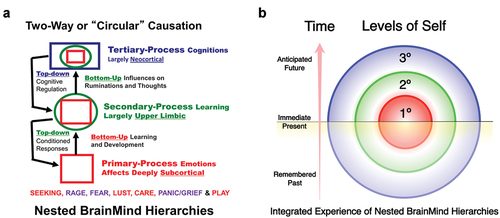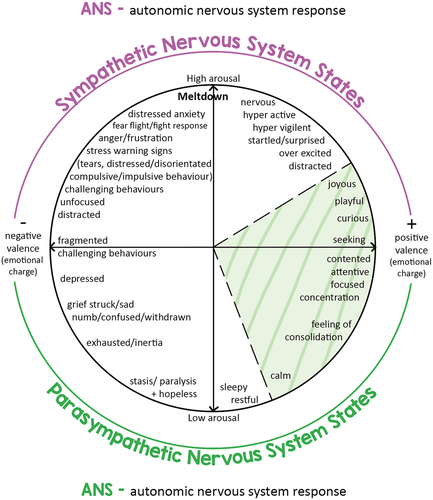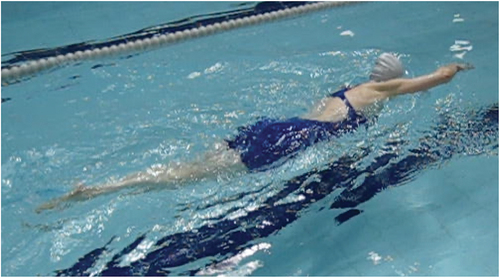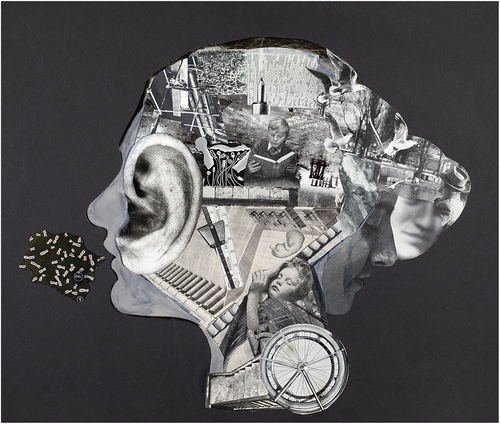Figures & data
Figure 1. Schematics of the layers of the Self in the brain, showing (a) their nested organization and (b) their integration and contribution to experience of the Self-As-Agent over time and in space. The primary, core self is the most phylogenetically ancient and therefore ontogenetically primary self – a site of integration of integrative, evaluative experience and agency. This is brainstem mediated. The secondary self stores with greater precision the memories with greater powers of discrimination for evaluation, but finally the tertiary self is empowered with the cognitive tools built on abstraction from primary experience through its secondary process and considered “offline” and cortically mediated. These layers of processing are reflected in the artwork, “Profile of a collaged mind finding sense and synthesis in the language of movement, fragment and esthetic coherence,” presented in Figure 4. Figure 1a (above) is reproduced under CC BY 3.0 license from Solms and Panksepp (Citation2012).

Figure 2. Pum’s states of subjective, internal regulation of affects and arousal by body activity, their personal expression and interpersonal sharing in movement. The green area indicates the optimum, ideal levels of arousal for practicing structured and creative routines in kinetic expression, and to facilitate “self-to-self” communication across levels (c.f. ). The left-hand side of the chart shows negative balance states, feelings that are detrimental to individual functioning and wellbeing and that incur further stress. The right-hand side of the chart shows more positively valanced feelings. The higher regions of arousal on this side can still result in an unpleasant and detrimental response. States of happiness and surprise are especially triggering, and stressfully disorientating. Being over-excited makes Pum dissociate and become over-stimulated, which often results in an inevitable shift to meltdowns and anxiety, leading to disorientation, confusion and a grief-stricken state.

Figure 3. Pum enjoying moving her body through the supportive medium of water, which offers routines of sensorimotor integration and progress in movement for psychological integration and health.

Figure 4. An original collage artwork by pum that explores and expresses visually a growing understanding of the neurobiological basis of autism spectrum disorder. the fetus represents the core self, and the collage spatially positions images in correspondence to the brain locations of various structures to represent those functions (see box for description.).

